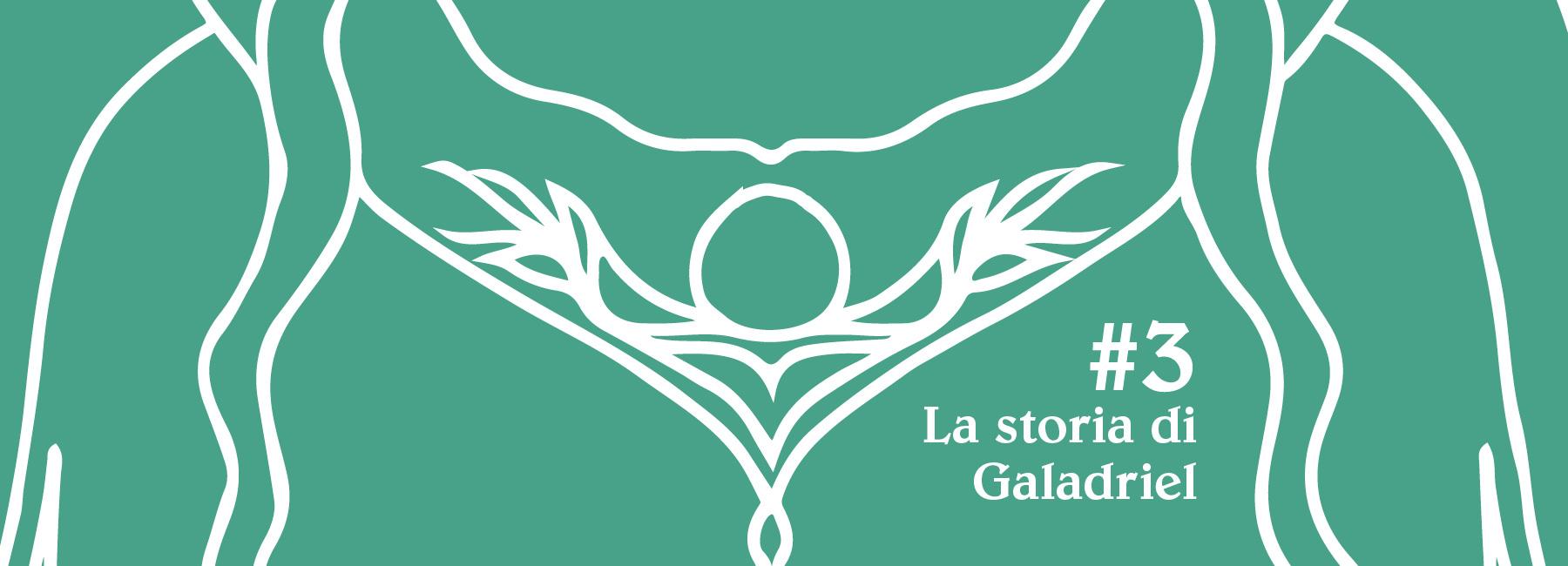di Benedetto Ardini
Appendici e Seconda Era (1955-1958)
TESTI TRATTATI IN QUESTA SEZIONE
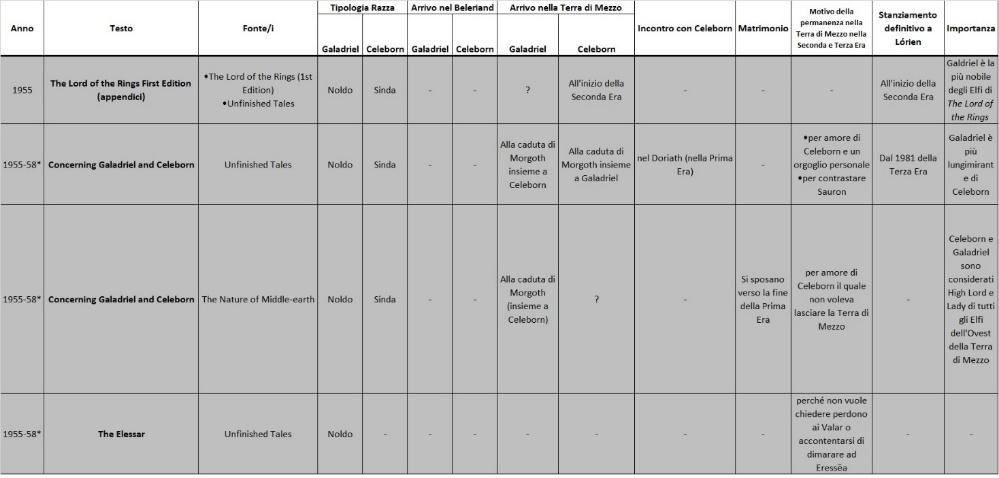
CONCETTO CHIAVE: Il background di Galadriel nella Seconda Era e le dinamiche degli Anelli del Potere vengono espansi
Finalmente nel 1955 Tolkien chiuse la pubblicazione di The Lord of the Rings. Con il terzo volume The Return of the King vennero anche pubblicate le Appendici dove c’erano i seguenti riferimenti a Galadriel:
- alla caduta di Sauron (alla fine della Terza Era) la Signora di Lórien abbatte i muri di Dol Guldur (la fortezza del Negromante di The Hobbit) e libera i suoi pozzi45
- è la più nobile degli Elfi di The Lord of the Rings46
- già dalla Seconda Era, vive con Celeborn (che adesso è un elfo Sinda e non più un Noldo) stabilmente a Lórinand (Lórien)47
L’ultimo di questi punti, in accordo sempre con quanto detto nell’abbozzo di Of the Rings of Power and the Third Age, sarà poi cambiato con la seconda edizione del libro di The Lord of the Rings che uscirà nel 1966. A questo punto, completata la questione The Lord of the Rings, Tolkien si dedicò ad espandere la storia di Galadriel in particolare esplorando gli eventi della Seconda Era. Il materiale che scrisse in questo periodo (a partire dal 195548) è quello che intitolò Concerning Galadriel and Celeborn. Questo, come ha affermato Christopher Tolkien, costituisce la fonte maggiore (insieme al testo definitivo di Of the Rings of Power and the Third Age pubblicato nel Silmarillion) di elementi riferiti alla geo-politica della Terra di Mezzo durante la Seconda Era49. Esistono due versioni di Concerning Galadriel and Celeborn: una, ben sviluppata, si trova pubblicata in Unfinished Tales50 redatto da Christopher Tolkien e l’altra, più breve, è inserita in The Nature of Middle-earth51 curato da Carl Hostetter.
Nella versione stampata in Unfinished Tales ritroviamo la Galadriel della Prima Era delineata con gli Annals e il Later Quenta Silmarillion ma con una significativa novità: incontra Celeborn nel Doriath52 (nella Prima Era) e non più direttamente a Lórien (nella Seconda Era) com’era stato specificato nel primo draft di Of the Rings of Power and the Third Age. Inoltre abbiamo per la prima volta l’inserimento esplicito di una ragione per cui Galadriel decide di rimanere nella Terra di Mezzo durante la Seconda e la Terza Era (nonostante molti degli Elfi scelgano di salpare per l’Ovest verso il Reame Beato): in questo scritto viene detto che questa sua scelta è dettata, in primis, sia dall’amore per Celeborn che da un orgoglio personale (legato al suo desiderio di avventure lontano da Aman)53 ma, in secondo luogo, anche dal suo sentito dovere di sconfiggere Sauron54.
Elenchiamo adesso tutte le vicende delineate in questo testo relative alla Seconda Era e riguardanti Galadriel:
- lei e Celeborn attraversano gli Ered Luin insieme (diverso da quanto veniva detto nei testi precedenti in cui Galadriel era da sola in questa azione)
- vivono inizialmente (insieme ad alcuni elfi Verdi, Sindar e alcuni elfi Nandor) nei pressi del lago Nenuial in qualità di Signora e Signore degli Elfi dell’Eriador
- Amroth, loro figlio, nasce durante il soggiorno a Nenuial
- Celebrìan, loro figlia, è presente nel testo ma non viene indicato il luogo e il periodo in cui nasce
- Galadriel percepisce che Sauron è rimasto nella Terra di Mezzo e che c’è un male all’opera nell’Est, oltre l’Eriador e le Montagne Nebbiose
- Fondano il reame di Eregion (nelle Appendici di The Lord of the Rings invece è fondato da Celebrimbor) nel 700 perché situato vicino alla dimora dei Nani di Khazad-dûm (Moria) con cui Galadriel, che in questo era più lungimirante di Celeborn, cercava di entrare in rapporto in previsione di un’alleanza dei diversi popoli contro il Nemico
- grazie all’amicizia dei Nani, Galadriel entra in contatto con il reame di Lórinand (il nome di quello che successivamente verrà conosciuto come Lórien o Lothlórien) dall’altra parte delle Montagne Nebbiose e abitato da elfi Nandorin
- Sauron, che si era camuffato in una forma che lo faceva sembrare un emissario dei Valar (un’anticipazione degli Istari, gli Stregoni), viene accolto in Eregion da Celebrimbor (il quale aveva seguito Galadriel e Celeborn in quel reame)
- Sauron, che percepisce in Galadriel il suo avversario principale, si sforza di placarla con gentilezza (come nota Christopher Tolkien qui il padre non spiegò perché Galadriel disprezzi Sauron: forse perché lei è in grado di vedere oltre il suo camuffamento, ma, in tal caso, non è chiaro perché gli permetta di rimanere nell’Eregion)55
- all’insaputa di Galadriel e Celeborn, Sauron riesce a guadagnarsi il favore della Gwaith-i-Mírdain, la confraternita fondata da Celebrimbor e altri artigiani di Eregion, e a farli rivoltare contro Galadriel e Celeborn nel periodo tra il 1350 e il 1400
- Galadriel lascia Eregion con i due figli, Amroth e Celebrían, e, passando attraverso Khazad-dûm, va nel Lórinand dove prende il controllo in difesa contro Sauron mentre Celeborn rimane in Eregion (poiché non voleva entrare nel reame dei Nani)
- quando Sauron crea l’Unico Anello a Mordor, e quindi tradisce la Gwaith-i-Mirdain, Celebrimbor va a Lórinand per chiedere consiglio a Galadriel e questa, non volendoli distruggere56, suggerisce di disperdere i Tre Anelli degli Elfi fuori da Eregion; in questa occasione Celebrimbor le dona Nenya, il Bianco Anello con cui viene detto che Galadriel fortifica e abbellisce Lórinand (gli altri due dei Tre Anelli vengono dati a Gil-galad nel Lindon)
- si verificano gli eventi della distruzione di Eregion, la morte di Celebrimbor e la cattura degli Anelli del Potere (tranne i Tre degli Elfi e forse l’Anello di Durin dei Nani) da parte di Sauron
- nonostante Celebrimbor non gli dica nulla a riguardo dei Tre Anelli, Sauron indovina che essi sono custoditi da Galadriel e Gil-galad
- la Guerra tra Sauron e gli Elfi si conclude con: (i) Elrond che si rifugia nella valle di Imladris insieme a Celeborn e (ii) Sauron che attacca il Lindon ma, a causa dell’intervento risolutivo dei Númenóreani, viene sconfitto, fugge e ritorna a Mordor (nel 1700)
- il ruolo di Galadriel nella Guerra non è specificato; viene solo detto che affida Lórinand ad Amroth e, insieme alla figlia Celebrían, raggiunge Celeborn ad Imladris dove viene tenuto un Consiglio (il primo Bianco Consiglio)
- Galadriel, Celeborn e Celebrían infine lasciano Imladris e vanno a dimorare in Belfalas
Il testo si conclude esplicitando che Galadriel ritornerà a Lórinand (Lórien) solo nel 1981 della Terza Era.

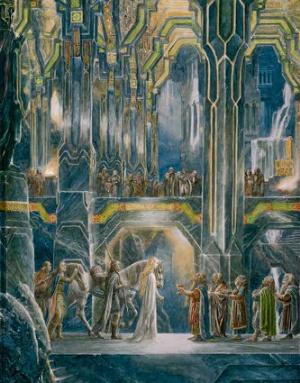
Il secondo testo, pubblicato in The Nature of Middle-earth, a livello di contenuti è pressoché allineato a quello riportato da Christopher Tolkien in Unfinished Tales tranne per il fatto che:
- Celeborn va insieme a Galadriel nel Lórinand attraversando Moria (nel 1300/1350 della Seconda Era)57
- Celebrimbor non va a Lórinand a consultarsi con Galadriel sui Tre Anelli ma ne spedisce direttamente uno (Nenya) tramite Amroth58
- Celeborn non si trova già ad Eregion quando questo è attaccato dall’esercito di Sauron ma giunge in soccorso insieme con il figlio Amroth e gli elfi di Lórinand59
Interessante è il fatto che in questo testo Celeborn e Galadriel in Eregion vengano considerati High Lord e Lady di tutti gli Eldar dell’Est60: questo, seppure possibilmente non coincidente con il titolo di High King associato a Gil-galad nelle Appendici di The Lord of the Rings61, sembrerebbe essere un accrescimento dell’importanza data a Galadriel e Celeborn a discapito del Re del Lindon. Dello stesso periodo di Concerning Galadriel and Celeborn vi è un altro testo che tratta di Galadriel: The Elessar62. Come intuibile dal titolo questo scritto, presente in due versioni diverse, racconta l’origine di Elessar, la gemma verde che Galadriel dona ad Aragorn in The Fellowship of the Ring63. Nella prima versione Galadriel riceve Elessar da Olórin (Gandalf) nella Terza Era64 al fine di mitigare per un po’ di tempo la caducità e l’appassimento della vita nella Terra di Mezzo, dolore che viene detto tormentare Galadriel. Il momento in cui donerà la gemma ad Aragorn segnerà la fine degli Elfi e l’inizio dei Giorni degli Uomini. Nella seconda versione, che dal punto di vista filosofico del dolore di Galadriel è coerente con la prima, è Celebrimbor (innamorato di Galadriel nonostante questa abbia scelto di stare con Celeborn65) che crea l’Elessar e, prima del periodo in cui Sauron viene accolto in Eregion, la dona all’elfa; il testo giustamente specifica che la Signora Elfica non avrà più bisogno del potere della gemma verde quando riceverà l’anello Nenya. Questi testi su The Elessar ci forniscono un importante approfondimento sull’ossessione di Galadriel per la decadenza delle cose nella Terra di Mezzo: caratteristica tipica degli Elfi come Tolkien aveva affermato in una lettera scritta pochi anni prima di questi lavori66. La seconda delle due versioni ci fornisce inoltre l’informazione precisa che già nella Seconda Era Galadriel abbia questa ossessione: interessante perché è lo stesso punto debole dei fabbri elfici di Eregion che nello stesso periodo li spinge a creare gli Anelli del Potere67(questo è in totale accordo con Concerning Galadriel and Celeborn dove Celebrimbor e Galadriel non hanno la forza di distruggere i Tre Anelli). Questo testo inoltre sembra darci, anche se Christopher Tolkien afferma possa trattarsi di un elemento inserito dal padre solo successivamente68, un ulteriore motivo della permanenza di Galadriel nella Terra di Mezzo diverso da quello dei testi Concerning Galadriel and Celeborn: l’Elfa rimane perché non vuole né chiedere perdono ai Valar né accontentarsi di andare a vivere nell’Isola di Eressëa, vicina ma non interna al Reame Beato69.
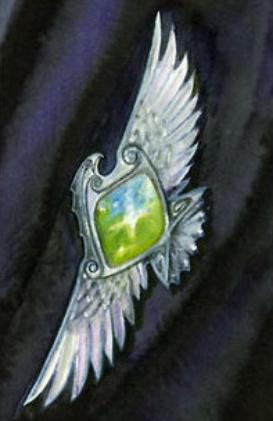
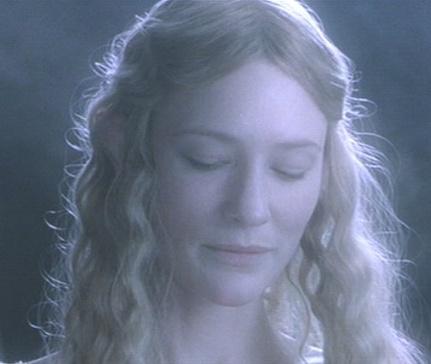
A questo punto, con Concerning Galadriel and Celeborn e The Elessar, possiamo dire che Tolkien avesse raggiunto un background di Galadriel nella Prima e Seconda Era oramai sufficientemente elaborato per portare un lettore a comprendere lo status dell’Elfa in The Lord of the Rings: probabilmente questo non era vero per il Professore che tornerà a riflettere ancora svariate volte sul personaggio cambiando ulteriormente “le carte in tavola”. Proprio in relazione a “cambiamenti” è opportuno considerare una lettera del 1958, in cui Tolkien commentava la sceneggiatura di un possibile adattamento di The Lord of the Rings (mai realizzato). In questa il Professore corresse un passaggio in cui Galadriel era definita ‘Regina Elfica’ scrivendo che non è da considerarsi tale70. Questo, se ricordiamo il testo in una precedente lettera71 e in Of the Rings of Power and the Third Age in cui veniva espressamente utilizzato il titolo di ‘Regina’, è indice che, a questo stadio, Tolkien abba rigettato tale concetto.
45 “[…] Celeborn came forth and led the host of Lórien over Anduin in many boats. They took Dol Guldur, and Galadriel threw down its walls and laid bare its pits, and the forest was cleansed.” (J.R.R. Tolkien, The Lord of the Rings, Appendix B The Tale of Years, pag.1094, Ebook Edition © August 2022 ISBN: 9780007322596).
46 Si veda: “The Exiles, dwelling among the more numerous Grey-elves, had adopted the Sindarin for daily use; and hence it was the tongue of all those Elves and Elf-lords that appear in this history. For these were all of Eldarin race, even where the folk that they ruled were of the lesser kindreds. Noblest of all was the Lady Galadriel of the royal house of Finarfin and sister of Finrod Felagund, King of Nargothrond.” (J.R.R. Tolkien, The Lord of the Rings, Appendix F, I The Languages and the Peoples of the Third Age, Of the Elves, pag.1128, Ebook Edition © August 2022 ISBN: 9780007322596). In realtà questo passaggio nella prima edizione di The Lord of the Rings del 1955 era leggermente differente perché Finarfin era chiamato Finrod e Finrod Felagund era chiamato solo Felagund: “In Appendix F to The Lord of the Rings is found in the First Edition (published in October 1955): ‘the Lady Galadriel of the royal house of Finrod, father of Felagund’; in the Second Edition (1966) this became ‘the Lady Galadriel of the royal house of Finarphin and sister of Finrod Felagund’.” (The History of Middle-earth, vol.10, Morgoth’s Ring, Part Three, The Later Quenta Silmarillion, Of Eldanor and the Princes of the Eldalië’ Commentary on Chapter 5, ‘Of Eldanor and the Princes of the Eldalië’, §41-2, pag.181, Ebook Edition © August 2021 ISBN: 9780008363697)
47 Come fa notare Christopher Tolkien, nella prima edizione di The Lord of the Rings Celeborn è supposto essere a Lórien già dalla Seconda Era: “[…] in the headnote to the Tale of Years of the Second Age, as it appeared in the first edition: ‘many of the Sindar passed eastward and established realms in the forests far away. The chief of these were Thranduil in the north of Greenwood the Great, and Celeborn in the south of the forest.’ In the revised edition this remark about Celeborn was omitted, and instead there appears a reference to his dwelling in Lindon” (Unfinished Tales, Part Two, ch. IV The History of Galadriel and Celeborn, The Elessar, pag.242, Edition 1998). Sul fatto che la parte meridionale di Boscoverde il Grande possa coincidere con Lórinand/Lórien: “This may imply that Galadriel’s power at one time extended into the southern parts of Greenwood the Great; and support for this may be found in ‘Concerning Galadriel and Celeborn’, p. 305, where the realm of Lórinand (Lórien) is said to have ‘extended into the forests on both sides of the Great River, including the region where afterwards was Dol Guldur’.” (Unfinished Tales, Part Two, ch. IV The History of Galadriel and Celeborn, The Elessar, pag.242, Edition 1998).
48 Per quanto riguarda il testo in Unfinished Tales Christopher scrive: “It is certain that this present text was composed after the publication of The Lord of the Rings, both from there being a reference to the book and from the fact that Galadriel is called the daughter of Finarfin and the sister of Finrod Felagund (for these are the later names of those princes, introduced in the revised edition […]” (Unfinished Tales, Part Two, ch. IV The History of Galadriel and Celeborn, Concerning Galadriel and Celeborn, pag.225, Edition 1998). Carl Hostetter in The Nature of Middle-earth riporta la data 1955 dei fogli in cui Tolkien scrisse il testo: “[…] manuscript drafting and writing in black nib-pen on Oxford college documents dated 1955, to which Tolkien subsequently gave the title “Concerning Galadriel & Celeborn” […]” (The Nature of Middle-earth, Part Three: The World, Its Lands, and Its Inhabitants, ch. XVI Galadriel and Celeborn, pag.347, Ebook Edition © September 2021 ISBN: 9780008387938)
49 “The text […] is nonetheless almost the sole narrative source for the events in the West of Middle-earth up to the defeat and expulsion of Sauron from Eriador in the year 1701 of the Second Age. Other than this there is little beyond the brief and infrequent entries in the Tale of Years, and the much more generalised and selective account in Of the Rings of Power and the Third Age (published in The Silmarillion).” (Unfinished Tales, Part Two, ch. IV The History of Galadriel and Celeborn, pag.225, Edition 1998) Unfinished Tales (p.225). HarperCollins Publishers. Edizione del Kindle.
50 Si veda Unfinished Tales, Part Two, ch. IV The History of Galadriel and Celeborn, Concerning Galadriel and Celeborn, pag.225, Edition 1998
51 Si veda Text 1 in The Nature of Middle-earth, Part Three: The World, Its Lands, and Its Inhabitants, ch. XVI Galadriel and Celeborn, pag.347, Ebook Edition © September 2021 ISBN: 9780008387938
52 “In Doriath she met Celeborn, grandson of Elmo the brother of Thingol.” (Unfinished Tales, Part Two, ch. IV The History of Galadriel and Celeborn, Concerning Galadriel and Celeborn, pag.225, Edition 1998). Quindi in questo testo Celeborn è uno dei Sindar, i Teleri che non giunsero mai ad Aman.
53 “For love of Celeborn, who would not leave Middle-earth (and probably with some pride of her own, for she had been one of those eager to adventure there), she did not go West at the Downfall of Melkor, but crossed Ered Lindon with Celeborn and came into Eriador.” (Unfinished Tales, Part Two, ch. IV The History of Galadriel and Celeborn, Concerning Galadriel and Celeborn, pag.225, Edition 1998)
54 “[…] she deemed it her duty to remain in Middle-earth while Sauron was still unconquered […]” (Unfinished Tales, Part Two, ch. IV The History of Galadriel and Celeborn, Concerning Galadriel and Celeborn, pag.230, Edition 1998). Commenta Christopher Tolkien: “[…] later in the narrative Galadriel’s remaining in Middle-earth after the defeat of Sauron in Eriador is ascribed to her sense that it was her duty not to depart while he was still finally unconquered.” (Unfinished Tales, Part Two, ch. IV The History of Galadriel and Celeborn, Concerning Galadriel and Celeborn, pag.230, Edition 1998) anche se sulla base del testo in sé è difficile dire con precisione se questo senso di dovere sia già precedente o solo successivo alla sconfitta di Sauron in Eregion.
55 “He perceived at once that Galadriel would be his chief adversary and obstacle, and he endeavoured therefore to placate her, bearing her scorn with outward patience and courtesy. [No explanation is offered in this rapid outline of why Galadriel scorned Sauron, unless she saw through his disguise, or of why, if she did perceive his true nature, she permitted him to remain in Eregion.]” (Unfinished Tales, Part Two, ch. IV The History of Galadriel and Celeborn, Concerning Galadriel and Celeborn, pag.228, Edition 1998)
56 “They should have destroyed all the Rings of Power at this time, ‘but they failed to find the strength’.” (Unfinished Tales, Part Two, ch. IV The History of Galadriel and Celeborn, Concerning Galadriel and Celeborn, pag.228, Edition 1998)
57 “Galadriel and Celeborn leave Eregion c. S.A. 1300 and retreat (through Moria) to Lórinand (with many of their non-Noldorin following): they are well received, and teach to the Lindar many things, warning them especially against Sauron.” (The Nature of Middle-earth, Part Three: The World, Its Lands, and Its Inhabitants, ch. XVI Galadriel and Celeborn, pag.348, Ebook Edition © September 2021 ISBN: 9780008387938)
58 “When Celebrimbor heard of onset of Sauron (fearing to keep the Three Rings himself) he sent one to Galadriel in Lórinand by Amroth.” (The Nature of Middle-earth, Part Three: The World, Its Lands, and Its Inhabitants, ch. XVI Galadriel and Celeborn, pag.348, Ebook Edition © September 2021 ISBN: 9780008387938)
59 “When Celebrimbor discovers the designs of Sauron and repents – and hides the Three Rings – Sauron invades Eriador from the south, and besieges Eregion. Celeborn and Amroth with Nandor and Dwarves come through Moria to the west.” (The Nature of Middle-earth, Part Three: The World, Its Lands, and Its Inhabitants, ch. XVI Galadriel and Celeborn, pag.348, Ebook Edition © September 2021 ISBN: 9780008387938)
60 “Galadriel and Celeborn are regarded as High Lord and Lady of all the Eldar of the West.” (The Nature of Middle-earth, Part Three: The World, Its Lands, and Its Inhabitants, ch. XVI Galadriel and Celeborn, pag.348, Ebook Edition © September 2021 ISBN: 9780008387938)
61 Il riferimento a Gil-galad in The Lord of the Rings è: “He was acknowledged as High King of the Elves of the West.” (J.R.R. Tolkien, The Lord of the Rings, Appendix B The Tale of Years, pag.1082, Ebook Edition © August 2022 ISBN: 9780007322596). In questo testo viene detto: “Galadriel and Celeborn are regarded as High Lord and Lady of all the Eldar of the West.” (The Nature of Middle-earth, Part Three: The World, Its Lands, and Its Inhabitants, ch. XVI Galadriel and Celeborn, pag.348, Ebook Edition © September 2021 ISBN: 9780008387938)
62 “This narrative goes with ‘Concerning Galadriel and Celeborn’ in certain features, and was probably written at about the same time, or a little earlier.” (Unfinished Tales, Part Two, ch. IV The History of Galadriel and Celeborn, The Elessar, pag.241, Edition 1998)
63 “Then she lifted from her lap a great stone of a clear green, set in a silver brooch that was wrought in the likeness of an eagle with outspread wings; and as she held it up the gem flashed like the sun shining through the leaves of spring. ‘This stone I gave to Celebrían my daughter, and she to hers; and now it comes to you as a token of hope. In this hour take the name that was foretold for you, Elessar, the Elfstone of the House of Elendil!’” (J.R.R. Tolkien, The Lord of the Rings, Appendix B The Tale of Years, pag.1082, Ebook Edition © August 2022 ISBN: 9780007322596)
64 In The Lord of the Rings viene detto che Gandalf (e gli altri Stregoni) arriva nella Terra di Mezzo nella Terza Era (attorno all’anno 1000): “When maybe a thousand years had passed, and the first shadow had fallen on Greenwood the Great, the Istari or Wizards appeared in Middle-earth.” (J.R.R. Tolkien, The Lord of the Rings, Appendix B The Tale of Years, pag.1084, Ebook Edition © August 2022 ISBN: 9780007322596). Gandalf stesso afferma che la Terza Era è stata la sua era: “[…] ‘The Third Age was my age. I was the Enemy of Sauron […]” (J.R.R. Tolkien, The Lord of the Rings, The Return of the King, book VI, ch. 5 The Steward and the King, pag.971, Ebook Edition © August 2022 ISBN: 9780007322596)
65 “Of Celebrimbor’s love for Galadriel there is no trace elsewhere.” (Unfinished Tales, Part Two, ch. IV The History of Galadriel and Celeborn, The Elessar, pag.242, Edition 1998)
66 Si tratta della lettera a Milton Waldman del 1951 in cui viene espresso il concetto dello sforzo degli Elfi di fermare il tempo, di imbalsamare: “They wanted the peace and bliss and perfect memory of ‘The West’, and yet to remain on the ordinary earth where their prestige as the highest people, above wild Elves, dwarves, and Men, was greater than at the bottom of the hierarchy of Valinor. They thus became obsessed with ‘fading’, the mode in which the changes of time (the law of the world under the sun) was perceived by them. They became sad, and their art (shall we say) antiquarian, and their efforts all really a kind of embalming […]” (Humphrey Carpenter, The Letters of J.R.R. Tolkien, letter n°131)
67 “Sauron found their weak point in suggesting that, helping one another, they could make Western Middle-earth as beautiful as Valinor. It was really a veiled attack on the gods, an incitement to try and make a separate independent paradise. […] at Eregion great work began – and the Elves came their nearest to falling to ‘magic’ and machinery. With the aid of Sauron’s lore they made Rings of Power […]” (Humphrey Carpenter, The Letters of J.R.R. Tolkien, letter n°131)
68 “[…] Galadriel is spoken of as being unwilling to forsake Middle-earth (cf. p. 302) – though the text was later emended and the conception of the ban introduced, and at a later point in the narrative she speaks of the pardon of the Valar.” (Unfinished Tales, Part Two, ch. IV The History of Galadriel and Celeborn, The Elessar, pag.241, Edition 1998)
69 “What wrong did the golden house of Finarfin do that I should ask the pardon of the Valar, or be content with an isle in the sea whose native land was Aman the Blessed? Here I am mightier.’” (Unfinished Tales, Part Two, ch. IV The History of Galadriel and Celeborn, The Elessar, pag.240, Edition 1998)
70 Si tratta della lettera allo sceneggiatore Forrest J. Ackerman. Il passaggio della sceneggiatura corretto da Tolkien è il seguente: “‘A splendid sight. It is the home of Galadriel … an Elvenqueen.’ (She is not in fact one.)” (Humphrey Carpenter, The Letters of J.R.R. Tolkien, letter n°210)
71 Lettera n°131 a Milton Waldman del 1951
Laureato in Ingegneria Fisica al Politecnico di Milano dove sta proseguendo la sua carriera come PhD. Fin da bambino è appassionato di Tolkien i cui libri rappresentano per lui uno stimolo e un accompagnamento fondamentali per la vita di tutti i giorni.


